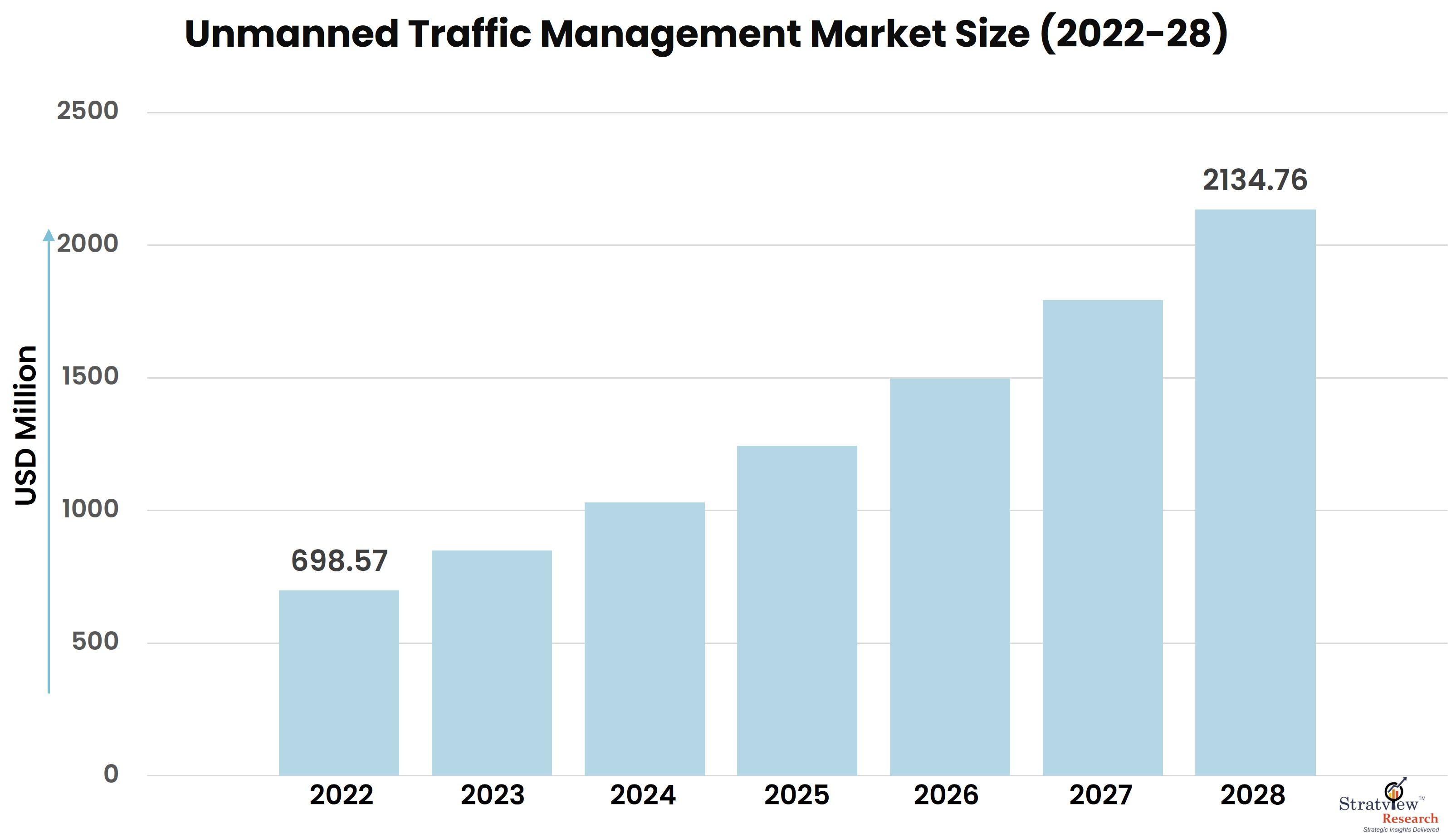Key Factors Shaping the Growth Dynamics of the Unmanned Traffic Management Market

The Unmanned Traffic Management Market is experiencing rapid expansion, driven by the increasing use of drones across multiple sectors. As drone applications multiply—from delivery services to surveillance and agricultural operations—there is an urgent need for reliable traffic management systems to coordinate the safe integration of these unmanned aerial vehicles (UAVs) into both controlled and uncontrolled airspace. In this article, we explore the key factors driving the growth dynamics of the unmanned traffic management market and its outlook for the future.
According to Stratview Research, the unmanned traffic management market was estimated at USD 698.57 million in 2022 and is likely to grow at a CAGR of 20.23% during 2023-2028 to reach USD 2134.76 million in 2028.
1. Rising Commercial Drone Applications
The exponential rise in the use of drones across industries is one of the most significant drivers of the unmanned traffic management market. Sectors such as logistics, agriculture, infrastructure inspection, and public safety are utilizing drones for various tasks, including aerial mapping, package delivery, and remote surveillance. Logistics giants like Amazon, UPS, and DHL are investing heavily in drone-based delivery systems, which necessitates advanced unmanned traffic management platforms to ensure safe, efficient, and scalable operations.
The increasing demand for UAVs is also reflected in other industries, such as energy and utilities, where drones are being used for inspecting infrastructure in remote or hazardous locations. As these applications continue to grow, unmanned traffic management systems will be critical in managing airspace, avoiding collisions, and enabling large-scale commercial drone operations.
2. Technological Advancements
Technological innovation is a key enabler of growth in the unmanned traffic management market. Emerging technologies such as artificial intelligence (AI), machine learning, 5G connectivity, and the Internet of Things (IoT) are enhancing unmanned traffic management systems by providing real-time data, improving communication between drones and ground control, and enabling more efficient traffic management.
AI-powered unmanned traffic management platforms can predict flight paths, monitor weather conditions, and adjust drone routes autonomously, while IoT sensors help track drones and ensure compliance with regulatory frameworks. Additionally, the rollout of 5G networks is expected to boost the capabilities of unmanned traffic management systems by providing faster and more reliable communication, paving the way for real-time data exchange and greater operational efficiency.
3. Government Regulations and Standardization
As drones become more integrated into daily operations, governments and aviation authorities worldwide are developing regulations to ensure the safe operation of UAVs in shared airspace. Agencies such as the Federal Aviation Administration (FAA) and the European Union Aviation Safety Agency (EASA) are actively working on policies to govern drone usage and establish guidelines for unmanned traffic management systems.
Regulatory frameworks and standardization efforts are critical for the growth of the unmanned traffic management market, as they provide a structured environment for drone operations. By fostering greater transparency and consistency, these regulations are expected to boost adoption rates of unmanned traffic management solutions, allowing for the safe and efficient expansion of drone activities.
4. Urban Air Mobility (UAM)
The rise of urban air mobility (UAM), which envisions the use of aerial vehicles like air taxis for passenger transport in urban areas, presents another significant growth factor for the unmanned traffic management market. As UAM develops, robust unmanned traffic management systems will be essential for managing the integration of both drones and manned aircraft in congested urban airspace.
Conclusion
The Unmanned Traffic Management Market is being shaped by several key factors, including the rapid adoption of commercial drones, advancements in technology, regulatory support, and the emergence of urban air mobility. As these trends continue to evolve, unmanned traffic management systems will play a crucial role in ensuring the safe, efficient, and scalable use of drones, driving significant growth in the years ahead.
- Questions and Answers
- Opinion
- Story/Motivational/Inspiring
- Technology
- Art
- Causes
- Crafts
- Dance
- Drinks
- Film/Movie
- Fitness
- Food
- الألعاب
- Gardening
- Health
- الرئيسية
- Literature
- Music
- Networking
- أخرى
- Party
- Religion
- Shopping
- Sports
- Theater
- Wellness
- News
- Culture
- War machines and policy

